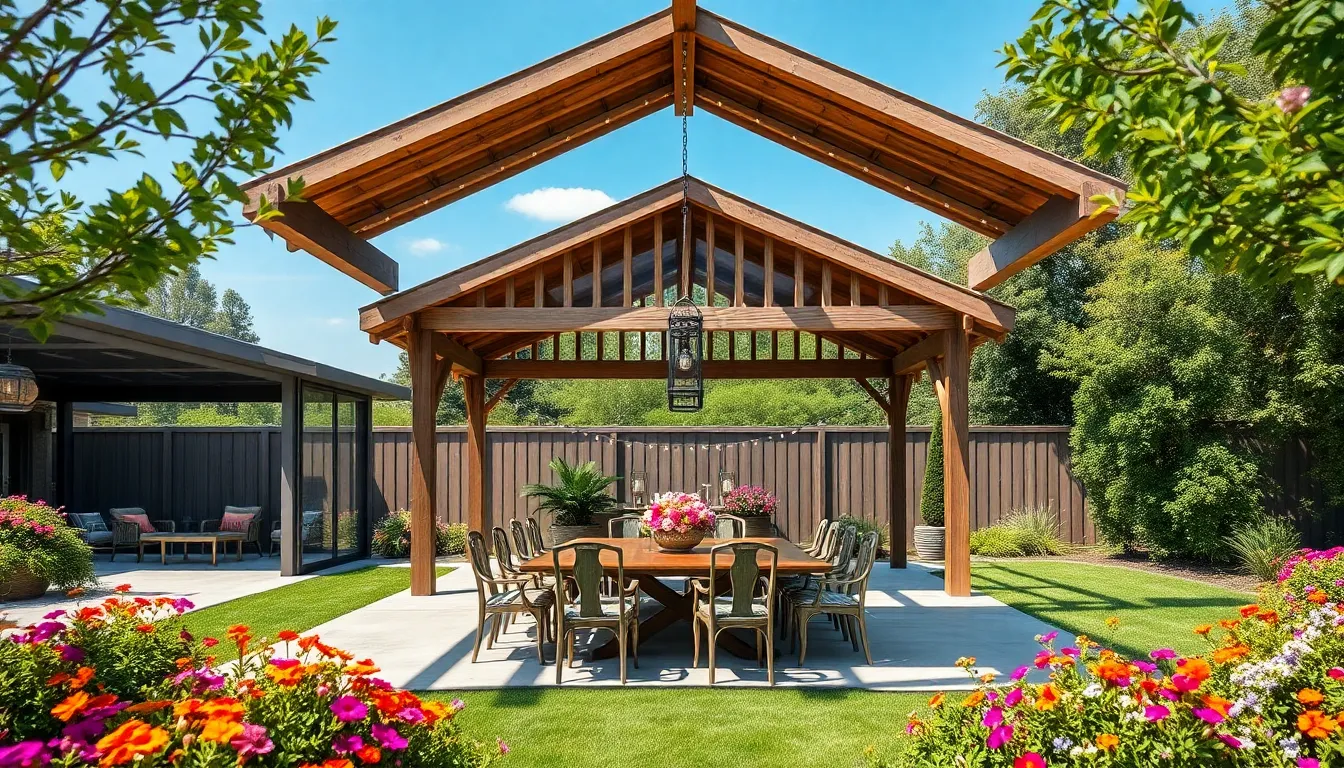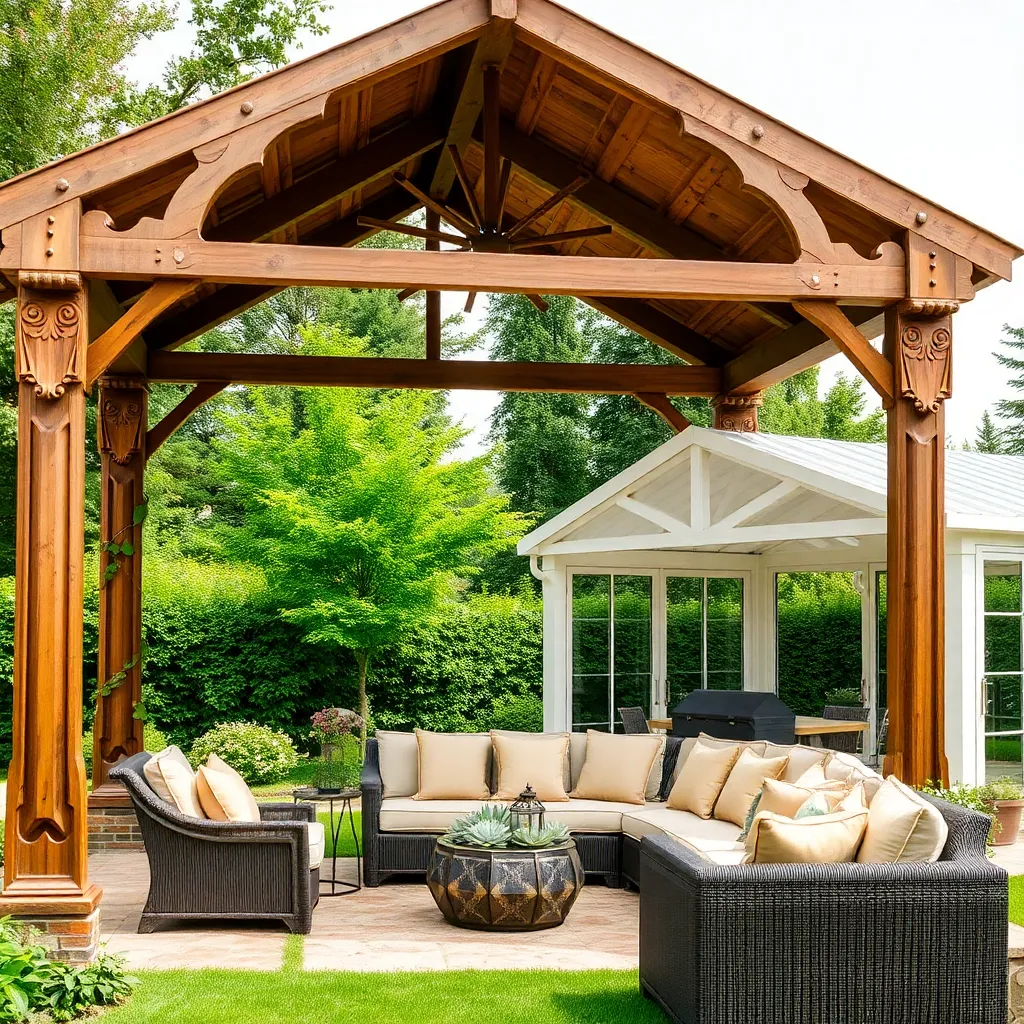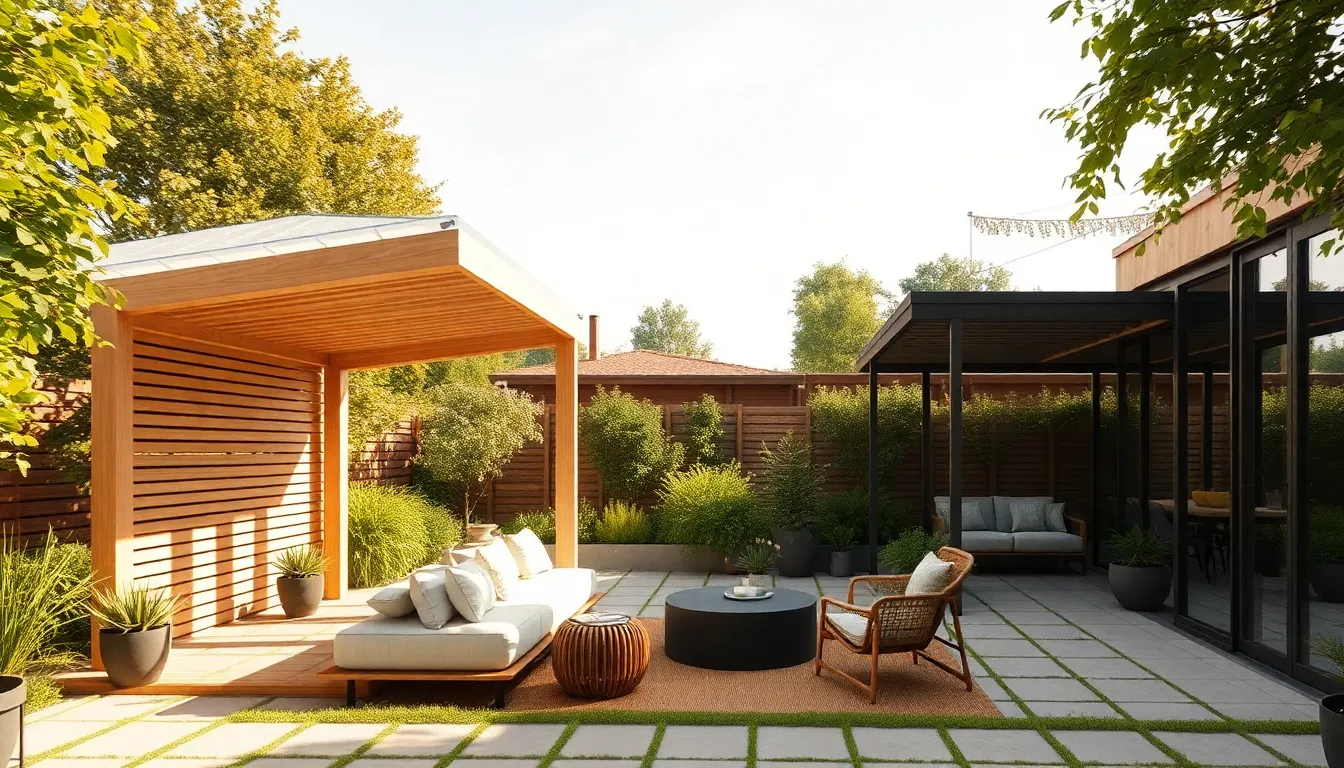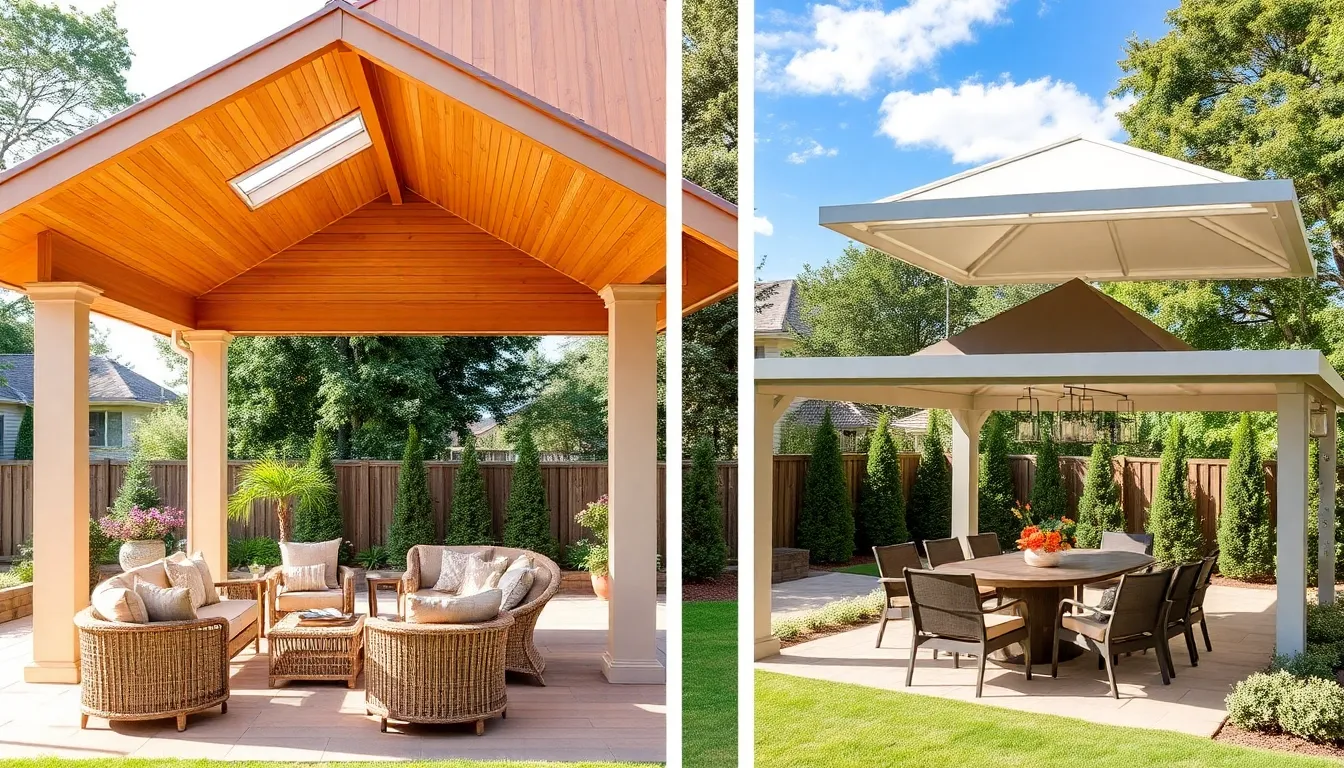Imagine transforming your backyard into a personal oasis where you can bask in nature’s embrace while enjoying the comforts of home. Whether you’re a seasoned designer or just beginning to explore the world of outdoor living, an open-air pavilion can redefine your space, offering both elegance and functionality. These structures not only enhance the aesthetic appeal of your garden but also create versatile areas for relaxation, entertaining, and connecting with loved ones.
In this article, we’ll explore eight captivating pavilion inspirations that promise to elevate your outdoor experience. From minimalist designs that blend seamlessly with nature to grand structures that make a bold statement, you’ll discover ideas that suit every style and budget. Get ready to unlock the potential of your outdoor space with practical tips and creative insights that make achieving your dream retreat an attainable reality.
Exploring Modern Pavilion Designs

In the realm of modern pavilion designs, simplicity and functionality reign supreme. Opt for minimalist structures that blend seamlessly with nature, using materials like steel or aluminum for a sleek finish. For beginners, consider starting with a basic rectangular shape, ideally around 10×10 feet, which offers ample space without overwhelming your garden. Incorporating natural elements such as wooden slats or bamboo screens can add warmth while providing shade and privacy.
Advanced gardeners might explore integrating solar panels into their pavilion roofs to power lighting or small appliances, enhancing both aesthetics and sustainability. To maximize comfort and usability, install adjustable features like louvered roofs or retractable awnings that allow for control over sunlight and ventilation. These upgrades not only make your pavilion more versatile but also increase its appeal and functionality throughout different seasons.
Incorporating Natural Elements Seamlessly
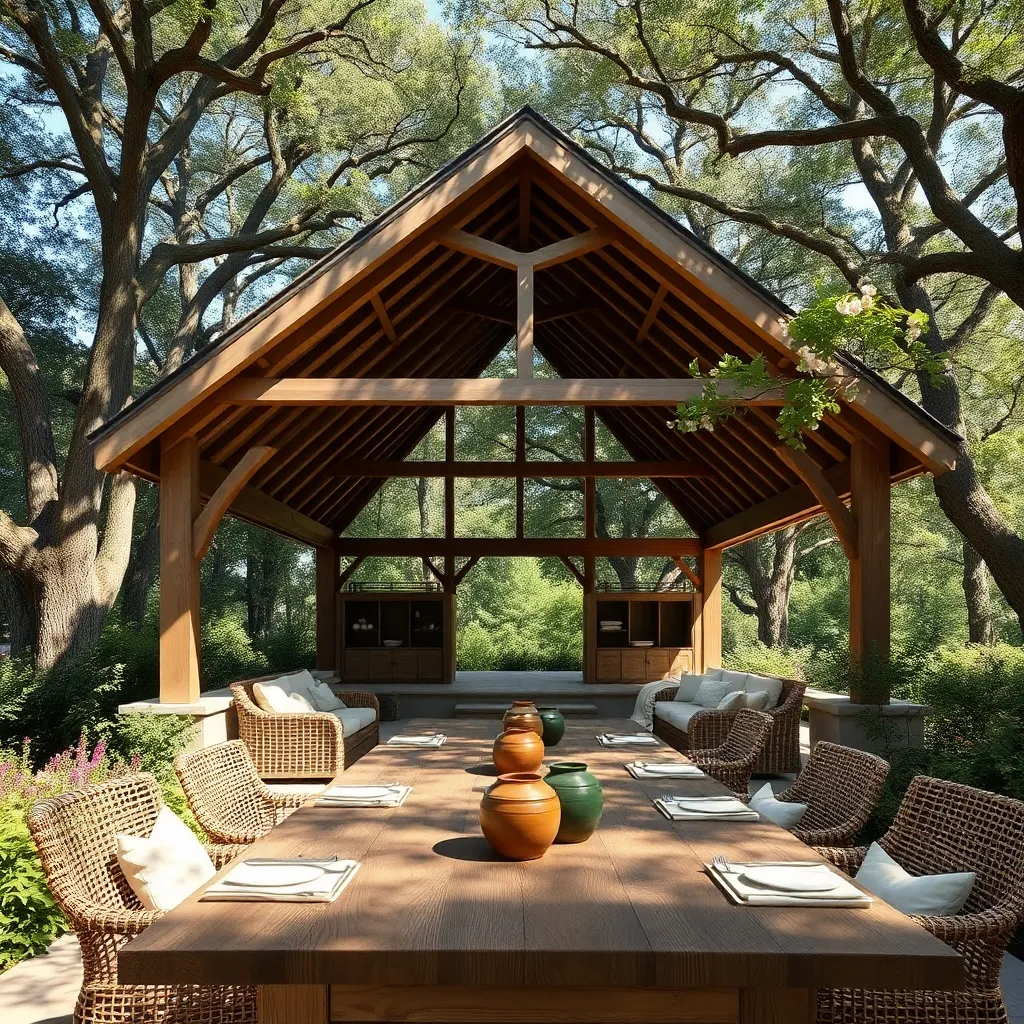
Integrating natural elements into your pavilion design not only enhances aesthetic appeal but also creates a harmonious connection with the surrounding landscape. Consider using locally sourced wood for the structure, which blends seamlessly with the environment while reducing carbon footprint. For a more immersive experience, incorporate climbing plants like wisteria or clematis that can wrap around beams, providing both shade and a burst of color when in bloom.
For a more advanced touch, include natural stone features such as a stone floor or a small water feature to add texture and tranquility. Using materials like slate or granite can offer durability and a timeless look. To further merge the pavilion with nature, position it strategically among existing trees, using them as natural windbreaks or shade providers. By carefully selecting materials and positioning, your pavilion will feel like an organic extension of your outdoor space.
Maximizing Open-Air Ambiance

To truly maximize open-air ambiance in your pavilion, focus on lighting and seating arrangements. Incorporate a mix of solar-powered lanterns and string lights to create a warm, inviting glow after sunset. Arrange furniture in a way that encourages conversation and relaxation, such as placing a circular seating area around a central fire pit or water feature. For those with more space, consider adding a hammock or a daybed for ultimate relaxation.
Incorporating natural materials like wood and stone can enhance the open-air feel, blending your pavilion seamlessly with the surrounding environment. Opt for weather-resistant wood like cedar or teak for a durable and appealing structure. For flooring, consider using natural stone or gravel, which not only looks attractive but also requires minimal maintenance. Advanced gardeners might incorporate vertical gardens or trellises with climbing plants to add privacy and a touch of nature. By focusing on these elements, you can create a pavilion that feels like a natural extension of your garden.
Utilizing Space for Social Gatherings

Transforming your open-air pavilion into a versatile space for social gatherings can enhance both functionality and enjoyment. Start by considering the layout; choose a design that maximizes seating while maintaining an open feel. Opt for modular furniture that can be easily rearranged to accommodate various group sizes. For a cohesive look, use weather-resistant materials like teak or powder-coated aluminum, which provide durability and style. Don’t forget to incorporate ample lighting with solar-powered string lights or lanterns to extend the usability of your space into the evening.
Enhance comfort and atmosphere by integrating thoughtful design elements. Install a retractable canopy or pergola with adjustable slats to control sunlight and shade, which is ideal for all-day events. Adding a built-in fire pit or outdoor heater can provide warmth and serve as a focal point during cooler months. For those with a larger space, consider creating distinct zones within the pavilion, such as a dining area with a large table and a lounge area with cushioned seating. This setup not only boosts the pavilion’s versatility but also encourages natural social interaction among guests.
Enhancing Privacy with Strategic Layouts

To enhance privacy in your open-air pavilion, consider using strategic layouts that incorporate natural elements. Planting a row of evergreen trees or tall shrubs around the perimeter creates a natural barrier that not only improves privacy but also adds to the aesthetic appeal. For a more immediate solution, install a trellis with climbing plants like clematis or jasmine, which can grow quickly and provide lush coverage. Position seating areas away from direct sightlines to neighboring properties to enhance the secluded feel.
Incorporating vertical elements is another effective strategy for enhancing privacy. Use tall, narrow planters to create a living wall that acts as a visual shield while maintaining an open and airy feel. Opt for materials like bamboo or reed fencing, which are cost-effective and easy to install, offering both privacy and style. For a more advanced approach, consider integrating moveable panels or screens that can be adjusted as needed to block views without compromising the open-air experience. These options allow you to customize the level of privacy based on specific needs or occasions.
Choosing Sustainable Building Materials
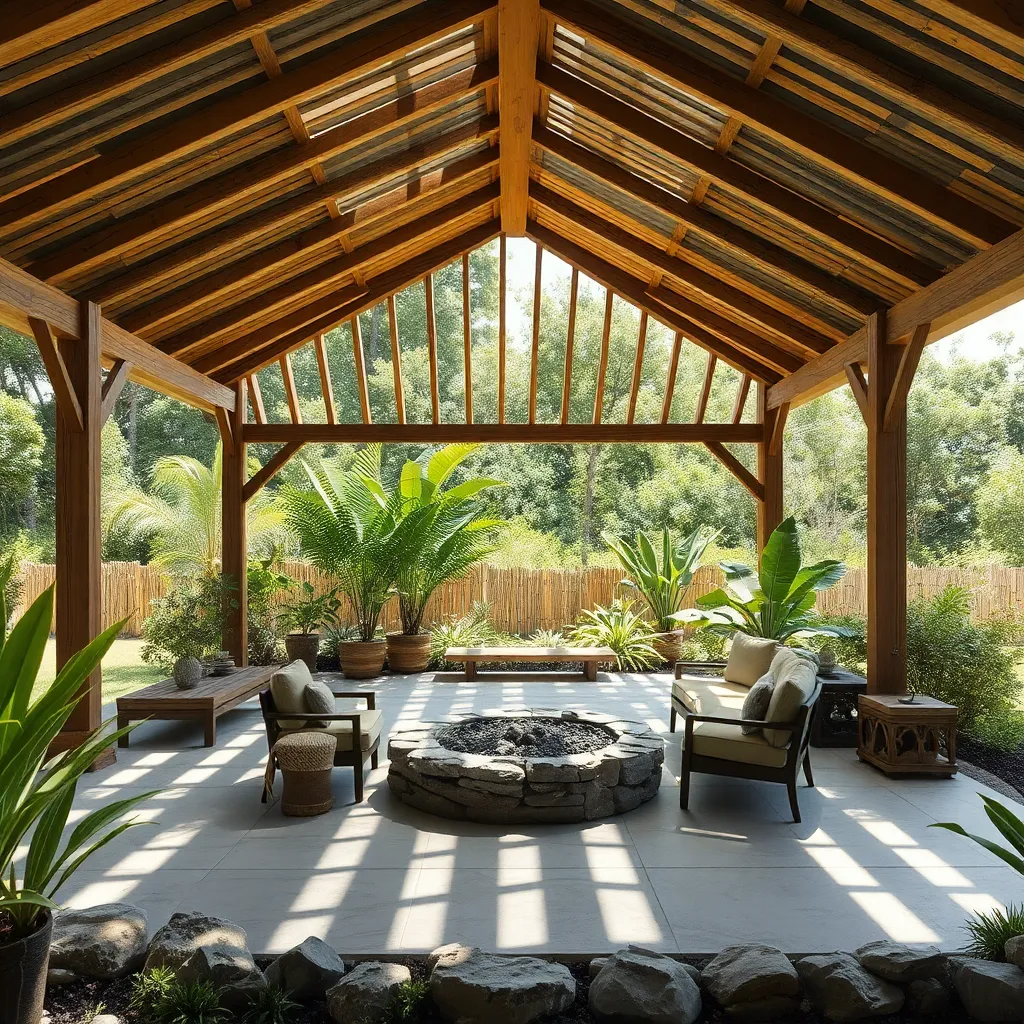
When choosing sustainable building materials for your open-air pavilion, consider options that are both environmentally friendly and durable. Bamboo is an excellent choice due to its rapid growth and strength, making it ideal for structural elements. Reclaimed wood not only adds character but also reduces demand for newly harvested timber, making it a smart choice for flooring or decorative beams. Weather-resistant fabrics for canopy covers, made from recycled materials, can further enhance sustainability while providing shade and comfort.
For those looking to elevate their pavilion’s sustainability, integrating solar panels into the design can provide renewable energy for lighting or small appliances. Consider using permeable materials like gravel or permeable pavers for the flooring, which help manage stormwater runoff and reduce the heat island effect.
- Ensure that your materials are sourced from local suppliers to reduce transportation emissions.
- Opt for non-toxic finishes and stains to maintain air quality and protect the environment.
By thoughtfully selecting materials, you can create a beautiful and eco-friendly space that aligns with sustainable living practices.
Integrating Innovative Lighting Solutions
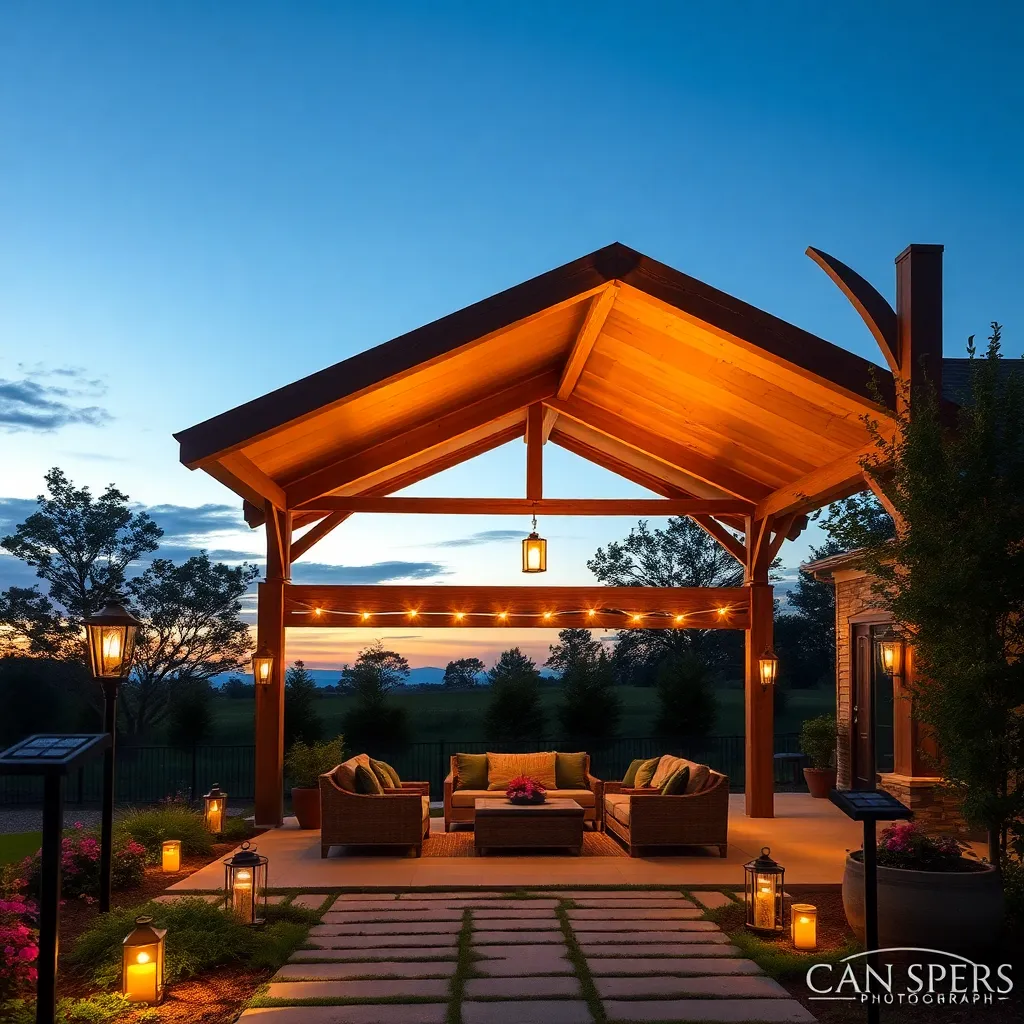
Incorporating innovative lighting solutions into your open-air pavilion can dramatically enhance its ambiance and functionality. Begin with solar-powered LED lights, which are both energy-efficient and environmentally friendly. These lights are easy to install and require minimal maintenance, making them perfect for beginners. For a more advanced touch, consider installing dimmable LED strip lights along the pavilion’s beams to create a customizable atmosphere.
To ensure your lighting design is both practical and stylish, focus on layering different light sources. Accent lighting can highlight architectural features or landscaping, while task lighting, such as pendant lights over a dining area, ensures usability after dark. Choose fixtures made from weather-resistant materials like powder-coated aluminum or stainless steel to withstand the elements. For added sophistication, integrate smart lighting systems that allow you to control brightness and color remotely, offering both convenience and a modern edge to your outdoor space.
Creating Cozy and Relaxing Retreats
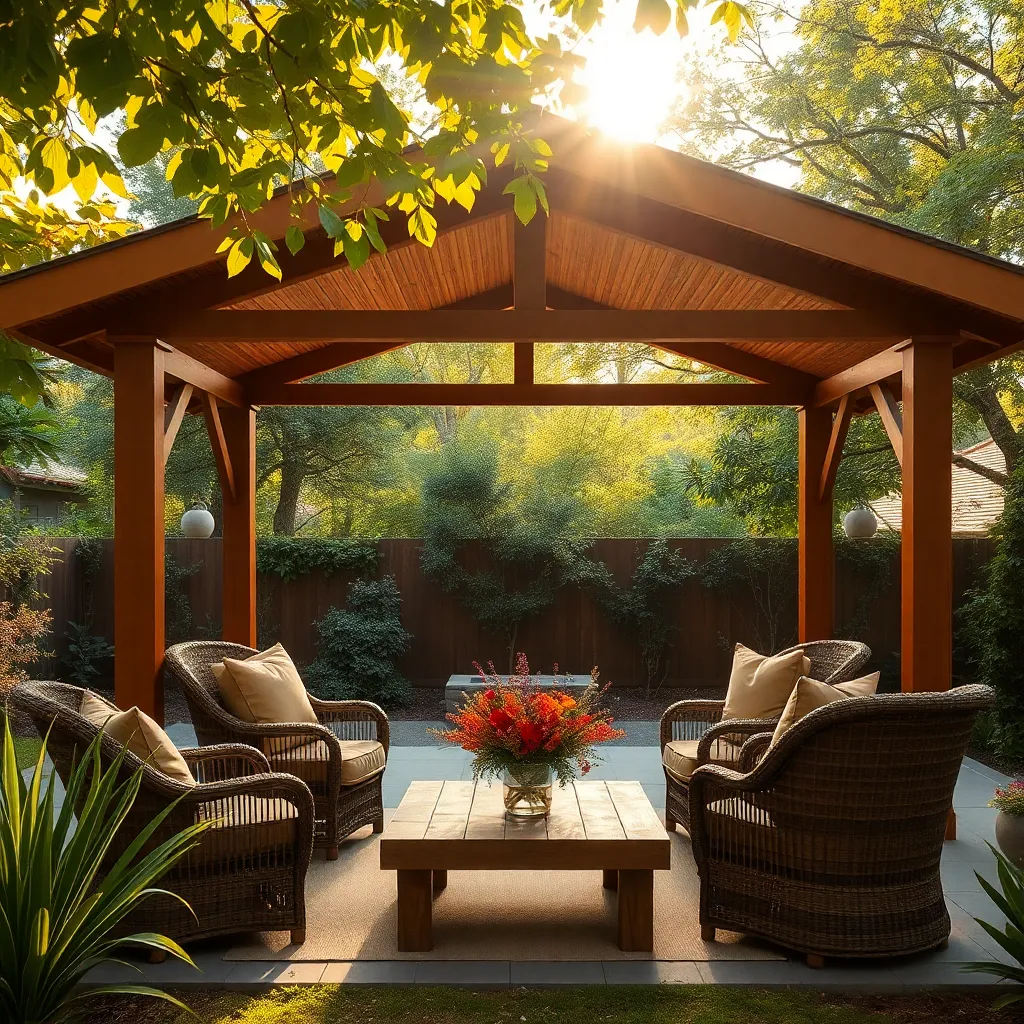
Transforming your open-air pavilion into a cozy retreat can be as simple as incorporating plush furnishings and weather-resistant textiles. Opt for durable materials like teak or eucalyptus for furniture, as these woods are both sturdy and naturally resistant to the elements. Layering with cushions and throws made from fade-resistant fabrics such as Sunbrella adds comfort and style without sacrificing longevity. Create a relaxing atmosphere by arranging seating to encourage conversation, perhaps around a central fire pit or outdoor rug.
To elevate your outdoor retreat, consider adding natural elements like a vertical garden or a water feature. A living wall not only enhances the aesthetics but also provides a cooling effect in warmer climates. Install a simple drip irrigation system to ensure your plants thrive with minimal maintenance. For those ready to take on a more advanced project, incorporating a small water fountain can offer a soothing auditory backdrop, enhancing the overall tranquility of your space. Whether you’re a novice or a seasoned DIY enthusiast, these elements can seamlessly blend comfort and nature for an inviting open-air haven.
Conclusion: Creating Beautiful Outdoor Spaces
In exploring the ‘8 Open-Air Pavilion Inspirations,’ we delved into key relationship concepts that transform outdoor spaces into sanctuaries of connection. From creating intimate corners for heart-to-hearts and hosting playful gatherings that spark joy, to designing spaces that encourage mindfulness, each pavilion inspiration serves as a metaphor for nurturing love and understanding. We also explored ideas for incorporating shared hobbies, prioritizing tranquility, and fostering creativity through vibrant, interactive designs. As you absorb these insights, consider taking immediate action by setting up a small, inviting spot in your garden or balcony where you and your partner can unwind and reconnect this week.
Remember, relationships thrive on continuous nurturing and growth, much like these inspiring outdoor spaces. Bookmark this article as a go-to resource for renewing your commitment to intentional connection and revisiting ideas that can revitalize your relationship. As you embark on this journey, envision a future where your relationship blossoms, supported by the warmth and openness of shared time and space. Together, let’s create environments where love thrives—one pavilion, one conversation, one moment at a time.

